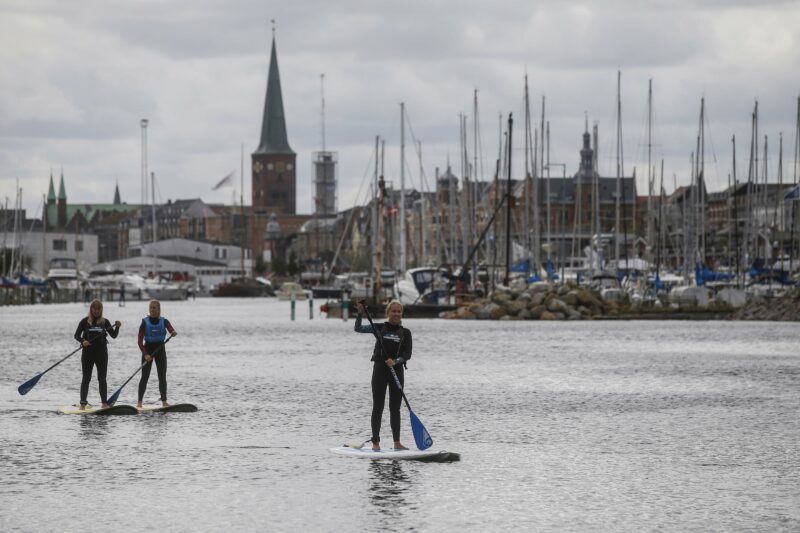Cities in Denmark are by law obliged to develop a climate adaptation plan including a plan for handling daily rain outside the combined sewer and extreme rain. There are other reasons that climate adaptation has been in focus, for the last decade: The surface-based solutions are often more cost effective than the traditional pipe solutions and gives us the possibility to create more sustainable urban drainage systems and contribute to green urban development.
Thus, the conditions for the utility companies have changed from working solely with underground invisible pipe solutions to creating visible long lasting surface solutions of great importance to the development of many cities.
The larger cities in Denmark are typically subdivided into hydrologically catchment areas. For each area a climate adaptation management plan is developed, and the alternative surface solutions considered are integrated into municipal urban development plans. This is to ensure local support, maximise implementation efficiency and optimize investments. Pavements on squares are removed to make room for green meeting places with benches, lights, trees, bushes, etc.
In less densely populated parts of the city, our utilities can motivate private houseowner to disconnect rainwater from their property – thereby preventing it from entering the sewers and contributing to climate adaptation.
To protect the recipient against overflow from the combined sewer system, solutions such as cloudburst tunnels function as retention basins. In this way, bathing water in the harbours is protected despite the increase in rain intensity that is the consequence of climate change.











